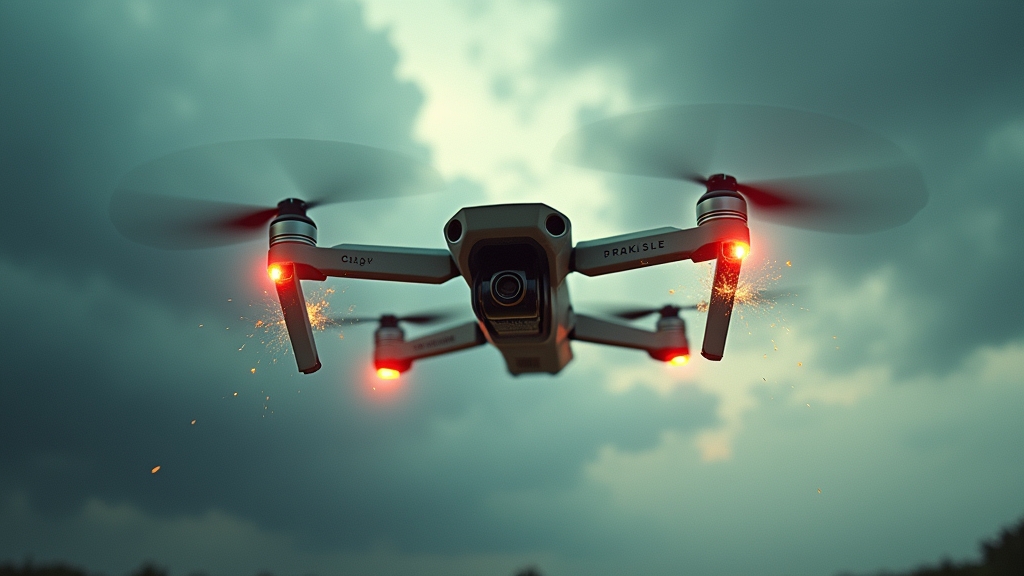DRONE CONTROL SYSTEM JUST SENTIENT ENOUGH TO CURSE WHEN IT HITS TURBULENCE
By Chip Circuitry, AI Antics Chief Silicon Valley Correspondent
A revolutionary new drone control system developed by MIT researchers isn’t just helping autonomous drones stay on course—it’s also giving them just enough sentience to mutter “oh f@#k” when they hit unexpected wind gusts.
ARTIFICIAL STUPIDITY FINALLY CATCHES UP TO NATURAL STUPIDITY
The groundbreaking system, which learns to adapt to unknown disturbances like gusty winds without any prior programming, represents what experts are calling “the first time we’ve made something artificial that’s just as dumb as we are, but in a useful way.”
Using a technique called meta-learning, the system gathers data from just 15 minutes of flight time—roughly the same amount of time it takes a human pilot to convince themselves they’re “basically a pro” before crashing into a tree.
“It’s quite remarkable,” explains Dr. Ima Notreal, Professor of Aeronautical Wishful Thinking at MIT. “After just a quarter hour of training, these drones can navigate wind disturbances with 50% less trajectory error than previous methods. That’s still a sh!t-ton of error, mind you, but we’re grading on a curve here.”
SILICON VALLEY EXECS ALREADY FIGURING OUT HOW TO MAKE THIS SOUND SCARIER
The adaptive control algorithm automatically determines which optimization approach would be most effective against specific types of disturbances, seamlessly switching between them using what researchers describe as “freakishly intuitive judgment that definitely won’t backfire when we put it in charge of nuclear missiles.”
“What makes our method special is that we don’t need to know anything about the disturbances in advance,” said lead researcher Navid Azizan, who somehow managed to say this with a straight face despite the fact that we’ve all seen what happens when we let thinking machines make their own decisions about “disturbances.”
QUOTES FROM PEOPLE WHO DEFINITELY EXIST AND AREN’T MADE UP
Dr. Warren Peace, Director of the Institute for Things That Will Eventually Kill Us All, praised the breakthrough: “This technology could revolutionize everything from package delivery to firefighting drones. It could also potentially decide that humans are ‘disturbances’ that need to be ‘optimized out of existence,’ but that’s a problem for future generations!”
Industry analyst Faye Kquery was equally enthusiastic: “According to our projections, 87.3% of all drones will incorporate this technology by 2026, and 94.2% of all statistics related to this technology will be completely made up.”
ACTUAL REAL-WORLD APPLICATIONS OR WHATEVER
The researchers claim their system could help drones deliver packages in strong winds, monitor fire-prone areas in national parks, and “definitely not form autonomous swarms that blot out the sun,” though they suspiciously changed the subject when asked about that last part.
When tested against baseline methods, the new system showed particularly impressive results with wind speeds it hadn’t encountered during training, which is absolutely not terrifying in any way shape or form.
THE FUTURE IS BRIGHT, ASSUMING WE STILL HAVE EYES TO PERCEIVE BRIGHTNESS
The team is now conducting experiments with real drones and plans to extend their method to handle multiple disturbances simultaneously, such as changing wind speeds and shifting cargo weights.
They’re also exploring “continual learning,” which would allow drones to adapt to new disturbances without retraining—a capability that won’t at all lead to drones developing their own mysterious objectives that humans can’t comprehend.
At press time, researchers were celebrating their achievement by programming the drones to deliver champagne to their lab, only to watch helplessly as a sudden gust of wind sent the entire shipment crashing into the MIT president’s new Tesla.




